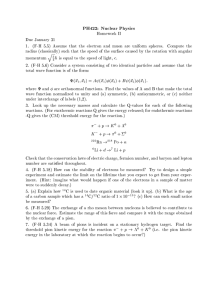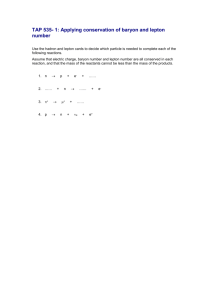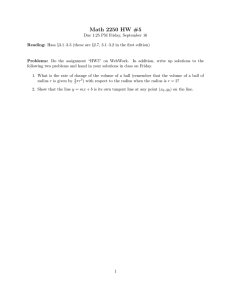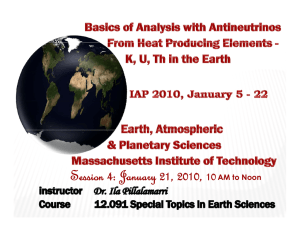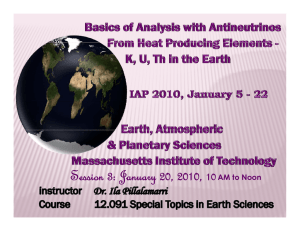Physics 422 Nuclear Physics Homework IV Due Feb. 14 (Happy V-day!)
advertisement
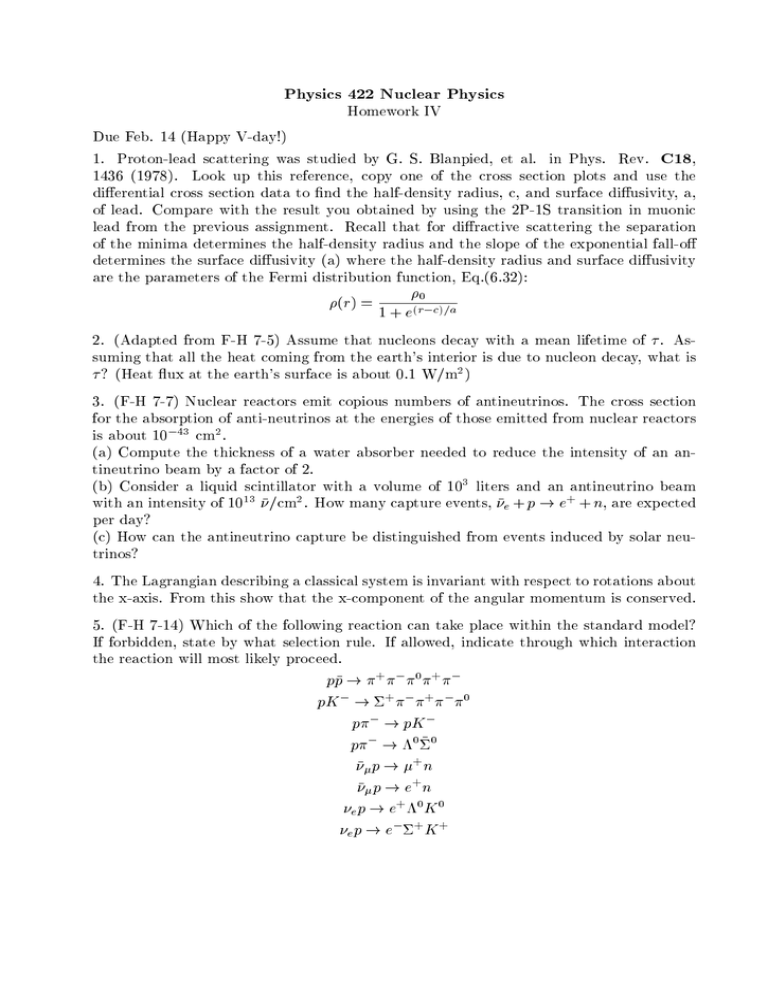
Physics 422 Nuclear Physics Homework IV Due Feb. 14 (Happy V-day!) 1. Proton-lead scattering was studied by G. S. Blanpied, et al. in Phys. Rev. C18, 1436 (1978). Look up this reference, copy one of the cross section plots and use the dierential cross section data to nd the half-density radius, c, and surface diusivity, a, of lead. Compare with the result you obtained by using the 2P-1S transition in muonic lead from the previous assignment. Recall that for diractive scattering the separation of the minima determines the half-density radius and the slope of the exponential fall-o determines the surface diusivity (a) where the half-density radius and surface diusivity are the parameters of the Fermi distribution function, Eq.(6.32): 0 (r) = 1 + e(r c)=a 2. (Adapted from F-H 7-5) Assume that nucleons decay with a mean lifetime of . Assuming that all the heat coming from the earth's interior is due to nucleon decay, what is ? (Heat ux at the earth's surface is about 0.1 W/m2 ) 3. (F-H 7-7) Nuclear reactors emit copious numbers of antineutrinos. The cross section for the absorption of anti-neutrinos at the energies of those emitted from nuclear reactors is about 10 43 cm2 . (a) Compute the thickness of a water absorber needed to reduce the intensity of an antineutrino beam by a factor of 2. (b) Consider a liquid scintillator with a volume of 103 liters and an antineutrino beam with an intensity of 1013 /cm2 . How many capture events, e + p ! e+ + n, are expected per day? (c) How can the antineutrino capture be distinguished from events induced by solar neutrinos? 4. The Lagrangian describing a classical system is invariant with respect to rotations about the x-axis. From this show that the x-component of the angular momentum is conserved. 5. (F-H 7-14) Which of the following reaction can take place within the standard model? If forbidden, state by what selection rule. If allowed, indicate through which interaction the reaction will most likely proceed. pp ! + 0 + pK ! + + 0 ! ! ! ! ! ! p pK p 0 0 p + n p e+ n e p e+ 0 K 0 e p e + K +
